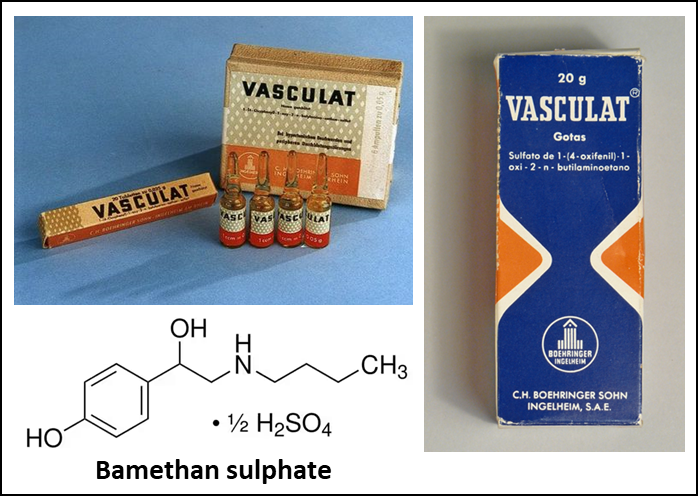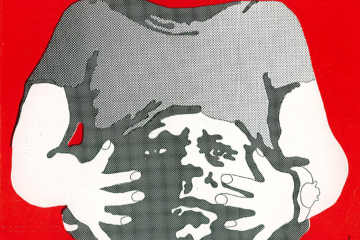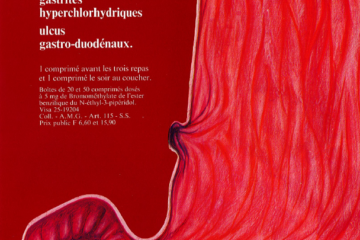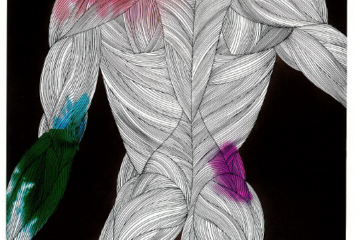including inflammatory or degenerative arthritis and varicosis. It was used to treat vasospastic conditions, arteriosclerotic peripheral vascular disease, Raynaud’s syndrome, occlusive vascular disease of the legs, post-thrombotic syndrome, degenerative muscular disorders, and other conditions involving peripheral vascular insuffciency. Vasculat® was a peripheral vasodilatory drug of choice in the 1970s to treat chronic vascular insufficiency of the inferior arteries and atherosclerotic arteriopathy of the lower extremities.
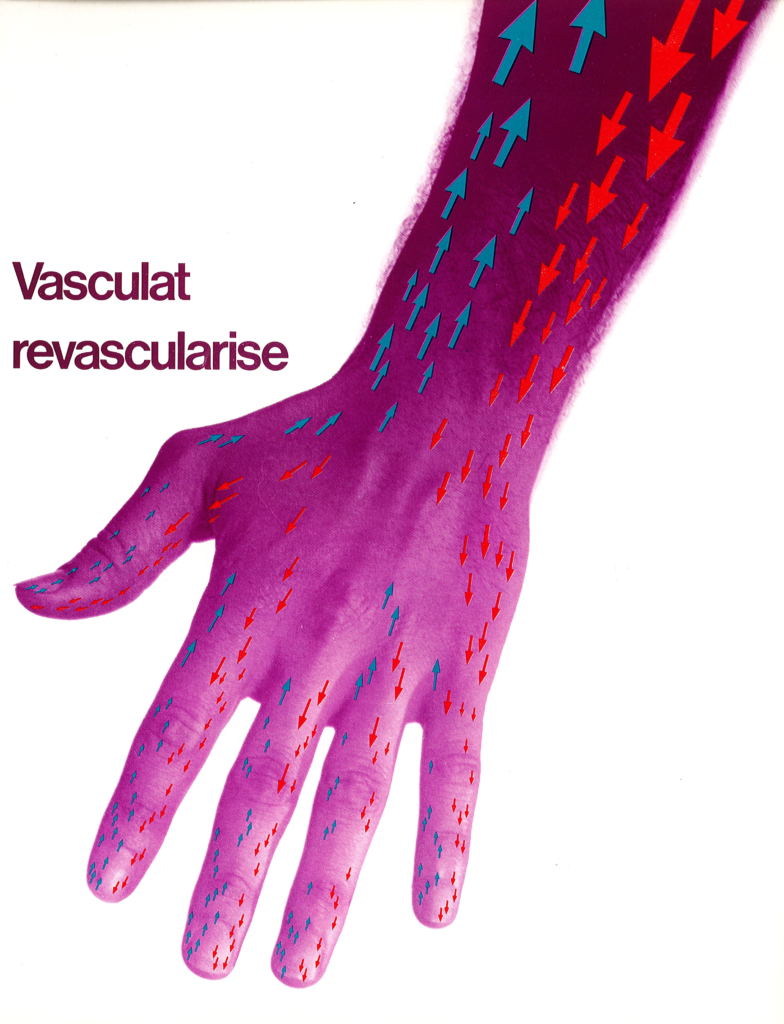
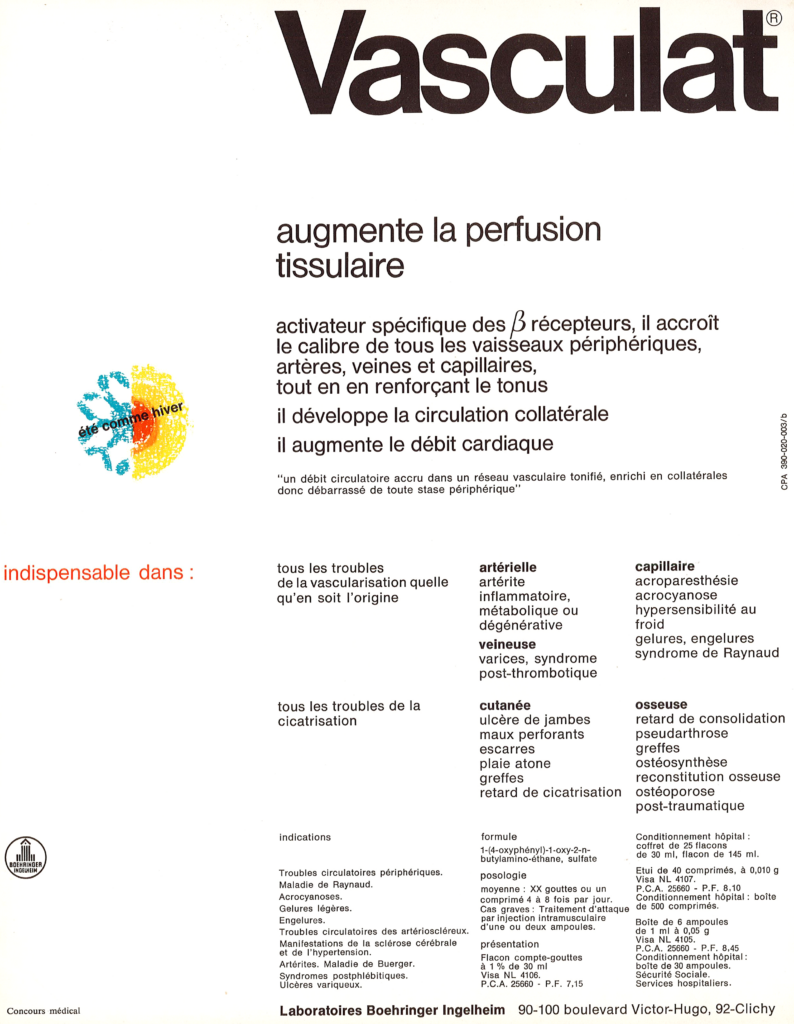
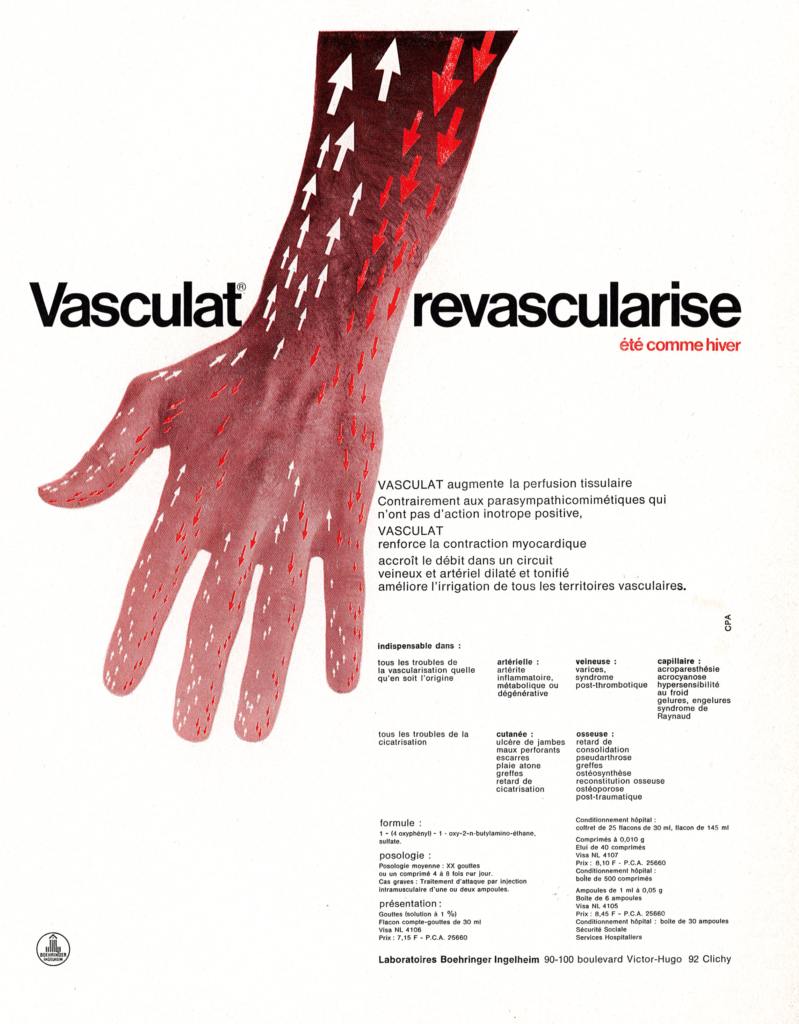
The active ingredient of Vasculat was d,l,-1-(4-hydroxy-phenyl)-1-hydroxy-2-n-butylamino-ethane, a beta-adrenomimetic compound also known as bamethan sulphate. This compound showed a depressor action on peripheral blood vessels due to the peripheral vasodilating action caused by stimulation of adrenergic beta-receptors (β-adrenoceptors agonist). It has been used for many years, before it was suspected to produce a mutagenic derivative by reaction with nitrites present in digestive tracts. This betamimetic drug is no longer prescribed today. There are other options to treat peripheral vascular diseases.
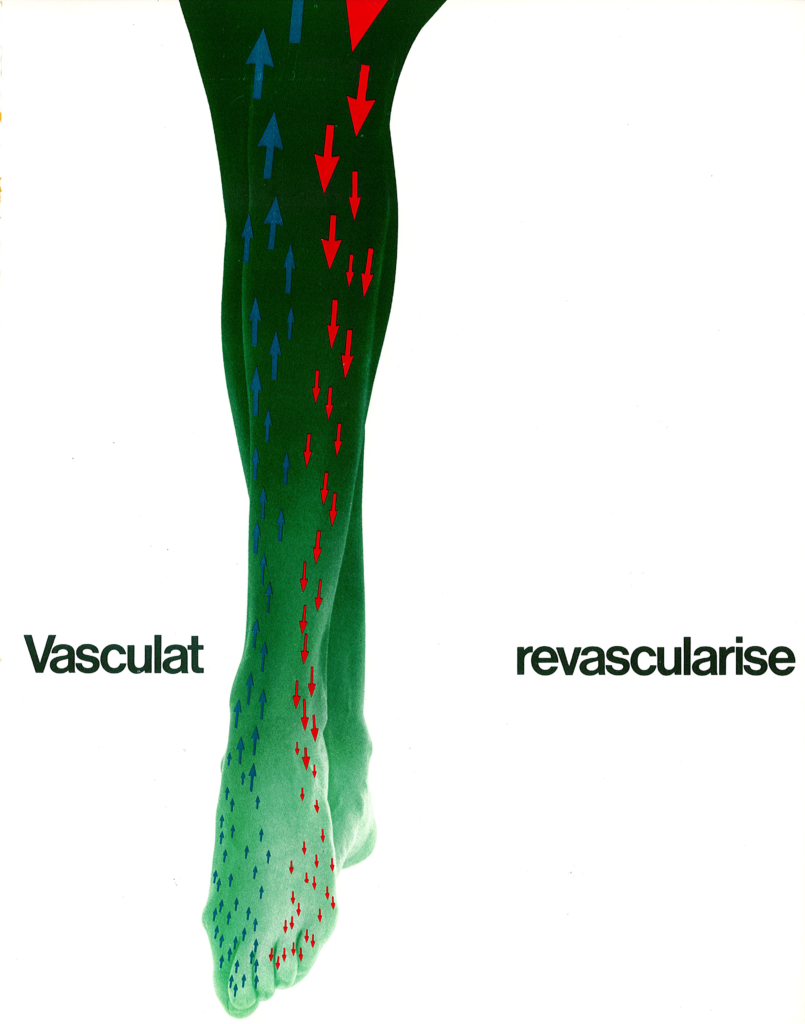
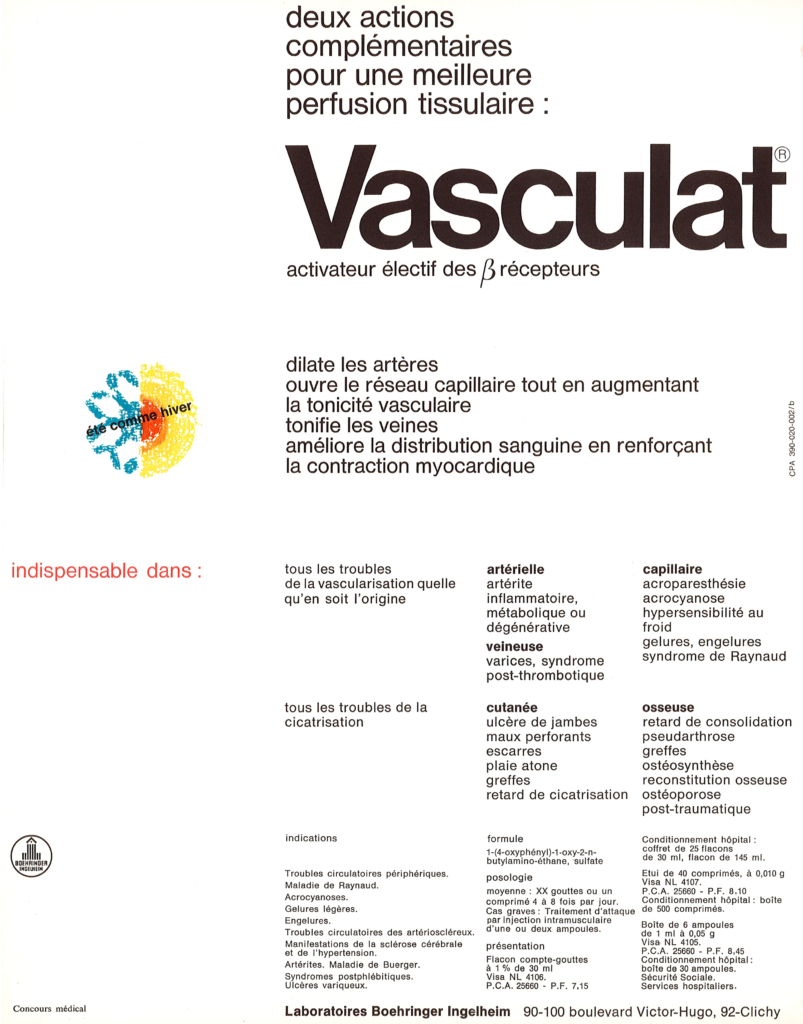
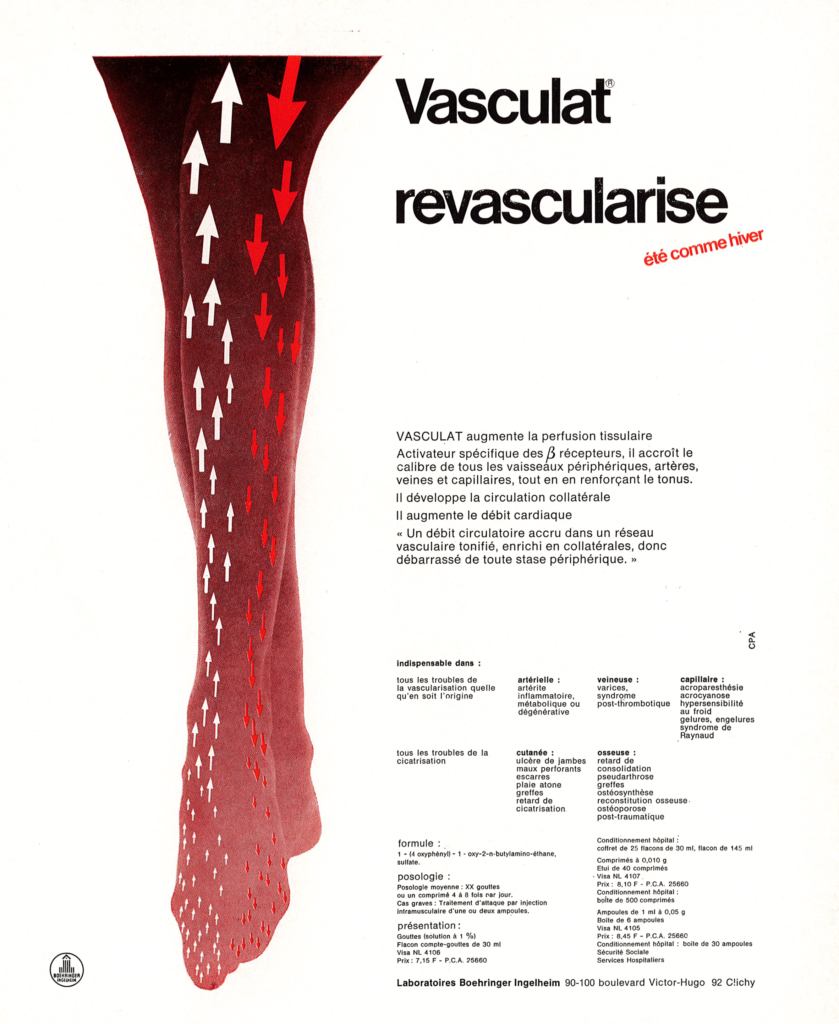
The adverts illustrated the revascularization effects of the drug on upper and lower extremities (hands and feet), highliting the capacity of the product to augment tissular perfusion and to improve vascular tonicity.
